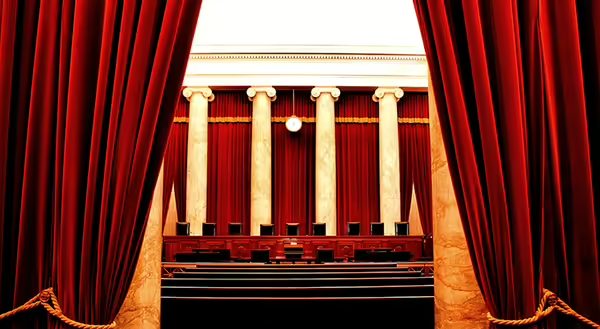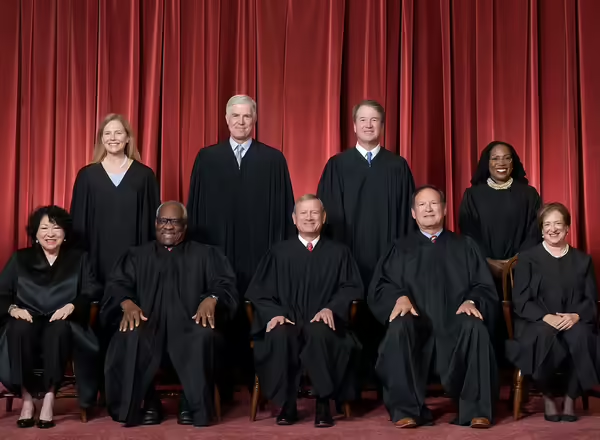
This is the second post in a blog series regarding the recent U.S. Supreme Court decision in Loper Bright Enterprises v. Raimondo and its impact on the federal government’s ability to enact regulations. Part one of this blog covers the background of Chevron deference and the reasoning behind the Court’s decision in 1984. This post will analyze the origins of the case, the decision made by the Court, and potential impacts on agriculture.
The U.S. Supreme Court heard oral arguments for Loper Bright in January 2024. This case was brought by a company that operates a fishing business in the Atlantic Ocean, which challenged a rule issued by the National Marine Fisheries Service (NMFS). The NMFS issued a rule under the Magnuson-Stevens Fishery Conservation Act that required fishing vessels that operate in one of eight managed fisheries to carry observers who collect data for conservation purposes and that the vessel's owners are responsible for the cost of these observers. One such fishery covered by this rule is the Atlantic herring fishery, in which Loper Bright Enterprises operates. The rule was challenged at the D.C. District Court, which upheld the rule on the basis that the agency’s interpretation was reasonable using the Chevron doctrine’s two-part test. The D.C. Court of Appeals upheld the lower court’s decision. The Supreme Court issued a 6-3 opinion On June 29th, with Chief Justice John Roberts writing the majority opinion.

Chief Justice Roberts explains that courts have the job of interpreting laws, a role given to them by the Constitution. He mentions that the Framers wanted the judiciary to have the final say on what laws mean. Roberts cites Chief Justice Marshall from Marbury v. Madison (1803), saying the courts must decide what the law says. However, courts often consider the Executive branch’s views since they are experts in their fields. But, courts are not required to follow the Executive branch’s interpretations. During the New Deal era, Congress gave more power to the Executive branch to make regulations. Roberts notes that the Court’s decisions, like in Skidmore v. Swift & Co. (1944), gave more importance to agency interpretations. This changed with the Administrative Procedure Act (APA), which says courts must decide all legal questions and not just follow agency interpretations. Section 706 of the APA confirms that courts, not agencies, determine what the law says.
Roberts argues that the role of courts under Section 706 conflicts with Chevron deference, which requires courts to defer to agency interpretations. He points out that attempts to make Chevron more workable have failed, leading to confusion. Because lower courts used Chevron in their decisions, Roberts sent the case back for re-litigation and declared Chevron deference, which lasted nearly 40 years, is no longer valid. Justices Thomas and Gorsuch agreed with Chief Justice Roberts. Thomas said Chevron gave too much power to the Executive branch, while Gorsuch argued against upholding Chevron based on past cases. Justice Kagan dissented, joined by Justices Sotomayor and Jackson, warning that overturning Chevron could lead to many challenges to existing regulations. Specific examples Justice Kagan points to include challenges to rules imposed by the Food and Drug Administration, the Fish and Wildlife Service, the Federal Aviation Administration, the EPA, and the Department of Health and Human Services.
Overturning a legal standard that has lasted for nearly 40 years is a serious action by the Supreme Court. Chevron deference has been the standard used by federal judges and courts across the country, and it has fundamentally shaped how federal agencies enact regulations. Under Chevron, the courts gave agencies wide latitude in interpreting statutes and implementing regulations under those statutes. It will take some time to see how courts will scrutinize agency interpretations and actions in the future. But how does this impact agriculture? While most of the focus in the wake of this decision has been on areas other than agriculture, there are many instances where this new scrutiny standard will impact agriculture and relevant federal regulations.
Suppose, for example, that Congress creates a new program in the new Farm Bill that allows the U.S. Department of Agriculture (USDA) to offer grants to “new” farmers and ranchers. The statute does not specify a “new” farmer or rancher, and the USDA defines a “new” farmer and rancher through a regulation. If that regulation is challenged, and a court uses Chevron, the definition will stand as long as it is a reasonable interpretation of the statute. Now that Chevron is overturned, the court will not simply defer to the USDA. Instead, the court will look at all relevant information (such as Congressional debates and statements) and how the agency interprets the statute but is not bound to abide by what the agency says.
This two-part blog series assessed the gradual erosion of Chevron deference—a legal doctrine that once shaped the landscape of administrative law. As courts increasingly scrutinize agency interpretations of statutes, the ground beneath longstanding precedents has shifted. For farmers and agribusinesses, this shift carries both promise and peril. On one hand, newfound judicial skepticism may empower them to challenge regulatory decisions that impact their livelihoods. Conversely, uncertainty looms—will agencies’ expertise be respected or second-guessed? As the dust settles, agriculture stands at a crossroads. Navigating this evolving legal terrain requires vigilance, adaptability, and perhaps a touch of legal alchemy. The seeds of change have been sown; now, we await the harvest.
To read the Court’s decision in Loper Bright, please use this link: https://www.supremecourt.gov/opinions/23pdf/22-451_7m58.pdf.
To read a brief overview of the case, please use this link: https://www.oyez.org/cases/2023/22-451.